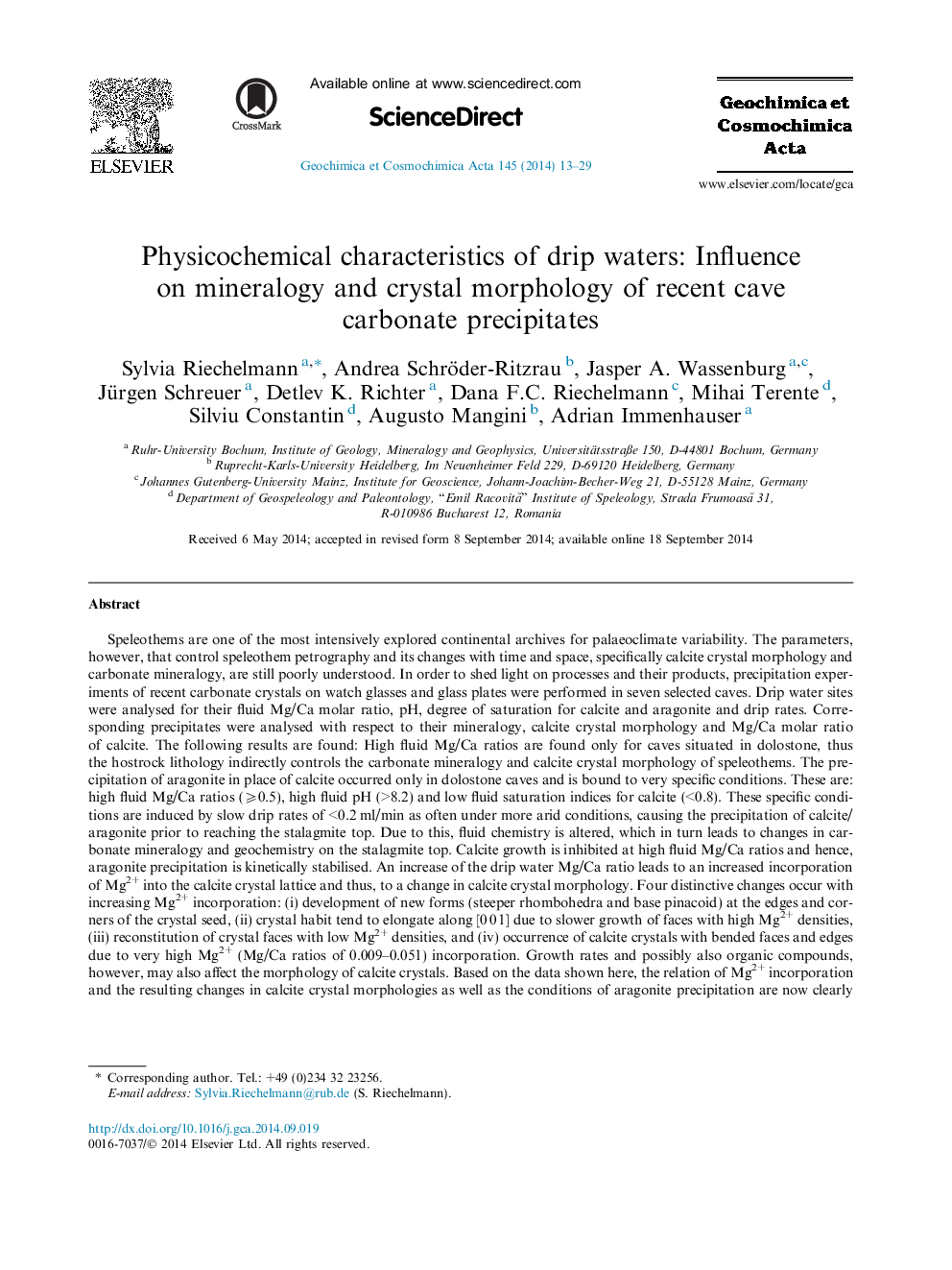| کد مقاله | کد نشریه | سال انتشار | مقاله انگلیسی | نسخه تمام متن |
|---|---|---|---|---|
| 4702035 | 1638012 | 2014 | 17 صفحه PDF | دانلود رایگان |
Speleothems are one of the most intensively explored continental archives for palaeoclimate variability. The parameters, however, that control speleothem petrography and its changes with time and space, specifically calcite crystal morphology and carbonate mineralogy, are still poorly understood. In order to shed light on processes and their products, precipitation experiments of recent carbonate crystals on watch glasses and glass plates were performed in seven selected caves. Drip water sites were analysed for their fluid Mg/Ca molar ratio, pH, degree of saturation for calcite and aragonite and drip rates. Corresponding precipitates were analysed with respect to their mineralogy, calcite crystal morphology and Mg/Ca molar ratio of calcite. The following results are found: High fluid Mg/Ca ratios are found only for caves situated in dolostone, thus the hostrock lithology indirectly controls the carbonate mineralogy and calcite crystal morphology of speleothems. The precipitation of aragonite in place of calcite occurred only in dolostone caves and is bound to very specific conditions. These are: high fluid Mg/Ca ratios (⩾0.5), high fluid pH (>8.2) and low fluid saturation indices for calcite (<0.8). These specific conditions are induced by slow drip rates of <0.2 ml/min as often under more arid conditions, causing the precipitation of calcite/aragonite prior to reaching the stalagmite top. Due to this, fluid chemistry is altered, which in turn leads to changes in carbonate mineralogy and geochemistry on the stalagmite top. Calcite growth is inhibited at high fluid Mg/Ca ratios and hence, aragonite precipitation is kinetically stabilised. An increase of the drip water Mg/Ca ratio leads to an increased incorporation of Mg2+ into the calcite crystal lattice and thus, to a change in calcite crystal morphology. Four distinctive changes occur with increasing Mg2+ incorporation: (i) development of new forms (steeper rhombohedra and base pinacoid) at the edges and corners of the crystal seed, (ii) crystal habit tend to elongate along [0 0 1] due to slower growth of faces with high Mg2+ densities, (iii) reconstitution of crystal faces with low Mg2+ densities, and (iv) occurrence of calcite crystals with bended faces and edges due to very high Mg2+ (Mg/Ca ratios of 0.009–0.051) incorporation. Growth rates and possibly also organic compounds, however, may also affect the morphology of calcite crystals. Based on the data shown here, the relation of Mg2+ incorporation and the resulting changes in calcite crystal morphologies as well as the conditions of aragonite precipitation are now clearly better understood. Further work should aim at linking the calcite crystal morphology of watch glass precipitates with calcite crystal fabrics in speleothems in order to exploit the petrographic archive of speleothem deposits.
Journal: Geochimica et Cosmochimica Acta - Volume 145, 15 November 2014, Pages 13–29
